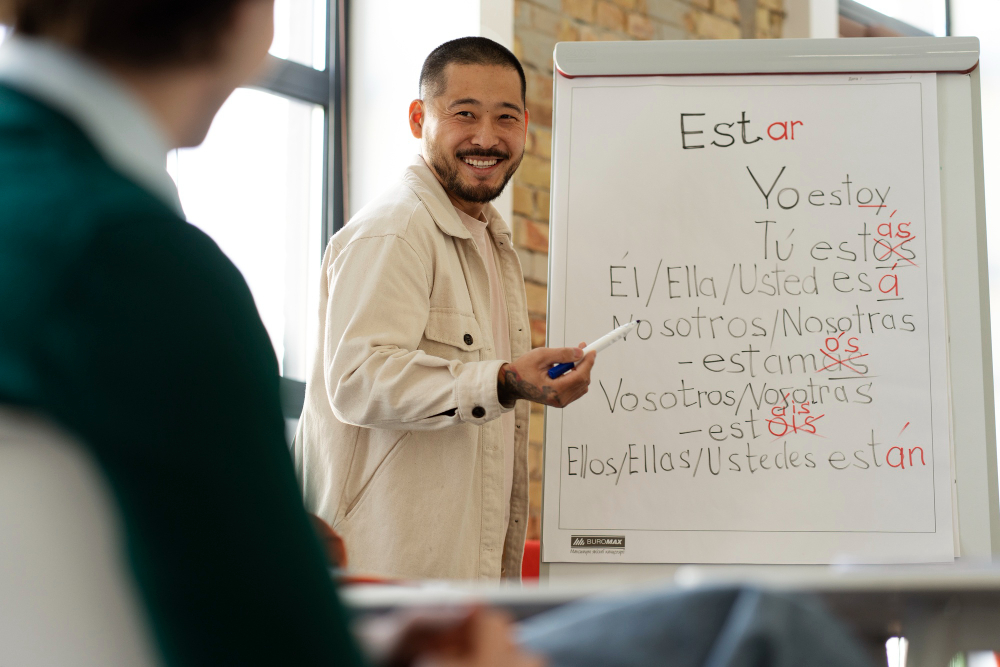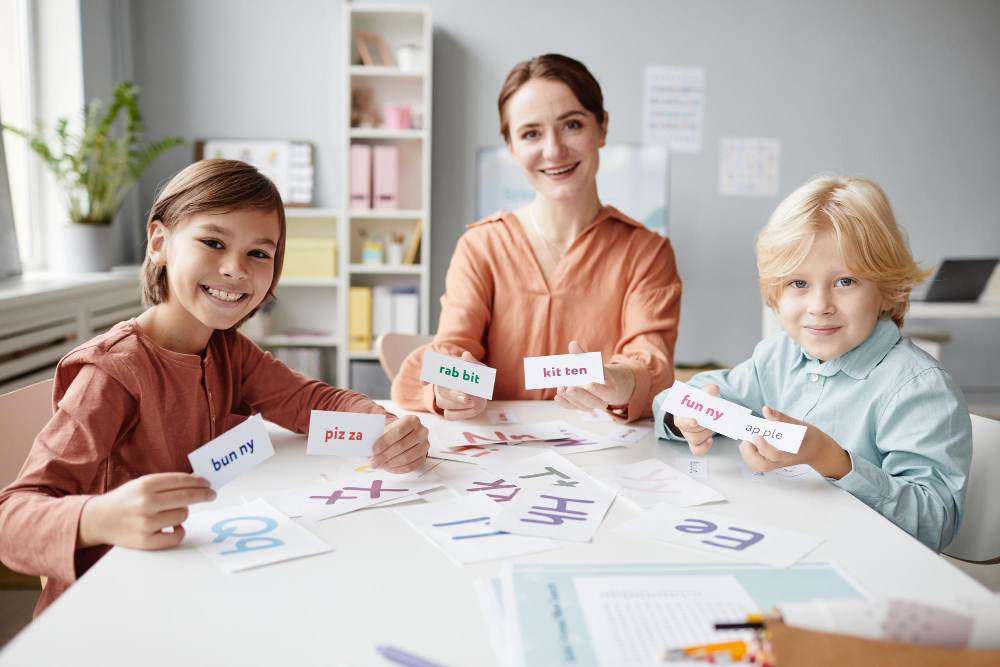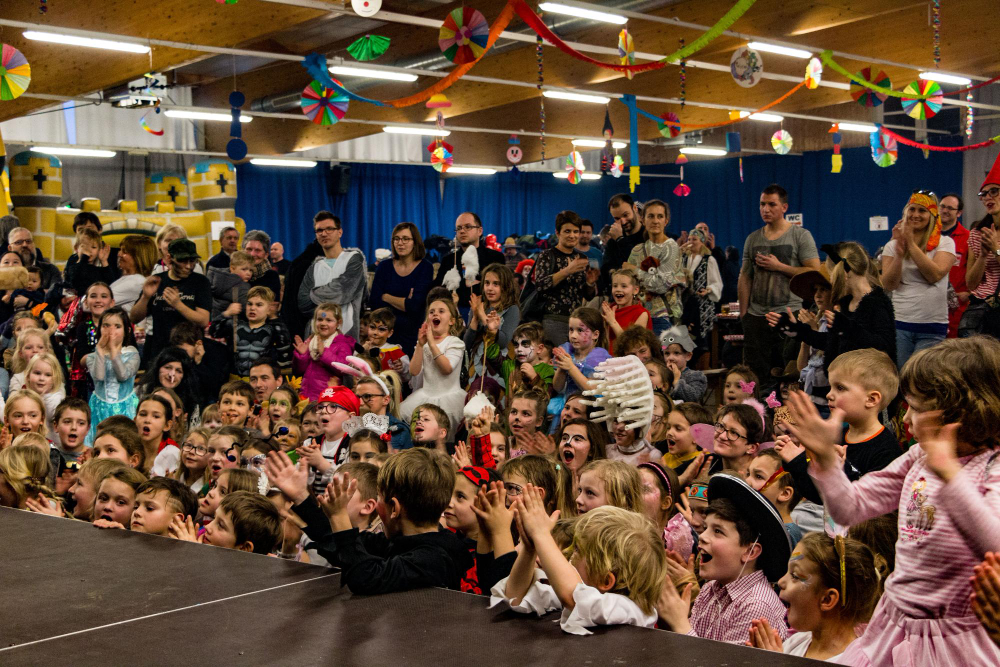The Finnish Approach to Multilingual Education: How Language Learning is Handled in Schools
August 20, 2025

August 20, 2025

What If Your Child Learned Three Languages Before High School?
In a bright, modern classroom in Helsinki, a group of 9-year-olds giggle as they practice greeting each other in Finnish, English, and Swedish. The teacher moves between the students, gently guiding pronunciation, switching effortlessly between languages. On the whiteboard, today's lesson reads: “Say hello in three languages and ask how your friend feels.” Laughter, curiosity, and cultural exchange fill the room.
This is not a special language school. It’s a typical Finnish classroom, where multilingual education is woven into the everyday learning experience.
Finland’s education system is admired around the world for its innovative practices, student-centered approach, and high outcomes. But one aspect that often gets less attention, yet plays a huge role in its success is how Finland handles multilingual education.
In this blog post, you’ll explore how Finland’s schools teach multiple languages, why bilingualism is a national value, and how immigrant students are supported through inclusive language policies. Whether you’re a teacher, school leader, or education enthusiast, this post will open a window into a country where language learning starts early and grows naturally.
To truly understand multilingual education in Finland, it’s important to begin with the country’s unique language policy. Unlike many nations that operate primarily in one language, Finland recognizes and supports linguistic diversity as a national strength. The country has two official national languages—Finnish and Swedish—and this bilingual foundation is not just a legal formality. It shapes how schools are organized, how teachers are trained, and how students learn from day one.
Finland’s commitment to language rights is deeply rooted in its legal system. The Constitution of Finland explicitly guarantees every citizen the right to receive education in their own language, whether Finnish or Swedish. This principle is more than just a statement—it’s put into action through the Basic Education Act, which ensures that all children, regardless of their linguistic background, have equal access to education.
In regions like Ostrobothnia, Åland, and parts of southern Finland, where Swedish-speaking communities are more prominent, students attend Swedish-medium schools, where all subjects are taught in Swedish and Finnish is taught as a second language. In the rest of the country, Finnish-medium schools are the standard, and Swedish becomes a compulsory second language starting in Grade 6.
But language education in Finland goes far beyond formal rules. It is guided by the belief that language is more than a subject—it’s a bridge to identity, equity, and community. Speaking one’s mother tongue in the classroom isn't just about comfort; it's about respecting who students are and where they come from.
Language is also seen as a living connection to culture and citizenship. Schools don’t just teach children how to speak, read, or write—they teach them how to understand each other across cultural lines, starting with language.

One of the most fascinating—and inspiring—aspects of language learning in Finland is just how early it begins. Unlike systems where foreign languages are introduced in the later school years, Finland believes that language learning should start when children are naturally curious, playful, and open to new sounds.
In many Finnish municipalities, children begin learning their first foreign language—usually English—as early as Grade 1, when they are just six or seven years old. This language is known as the “A1 language,” and it is compulsory under Finland’s national core curriculum.
By the time students reach Grade 4, they are often given the chance to choose an additional language, referred to as the “A2 language.” This second language may vary depending on the school and region but commonly includes Swedish, German, French, Russian, or even Spanish and Chinese in larger cities.
What makes this early instruction so effective is how it’s delivered.
In the early grades, the goal is not to drill grammar rules or memorize long vocabulary lists. Instead, Finnish schools focus on play-based and experiential learning. Language is introduced through:
These activities are designed to create a safe and joyful environment, where students are not afraid to make mistakes and are encouraged to experiment with new words.

Through this early exposure, students begin to:
For example, a second grader might sing a weather song in English in the morning, listen to a fairy tale in Swedish before lunch, and write a short note to a classmate in Finnish—all in one day.
By the time they reach lower secondary school (Grades 7–9), many Finnish students are confidently using two or even three languages. Some may continue studying one or more of those languages all the way through upper secondary school and beyond.
Across Finland, schools are designed not only to teach Finnish and Swedish but also to support real bilingual experiences. These are not optional add-ons—they are integrated into the structure of schools, curriculums, and community life.
In regions where Swedish is spoken as a first language—such as Ostrobothnia, Åland, and parts of southern Finland—students attend Swedish-language schools, where all subjects are taught in Swedish. Finnish is introduced as a second language from an early stage, but the primary language of instruction remains Swedish throughout basic education.
In larger cities like Helsinki, Espoo, and Turku, schools may offer bilingual programs where instruction is divided between two languages, typically Finnish and English or Finnish and Swedish. In these bilingual streams, students might study math in Finnish one day and natural sciences in English the next. The aim is to give students practical fluency in both languages—not just in conversation, but across academic subjects.
These programs are particularly popular among internationally-minded families and are often part of municipal language strategies designed to prepare students for global opportunities.
Further north, in the Lapland region, Finland provides Sámi-language instruction for its Indigenous Sámi populations. These schools or school sections are not only linguistically different—they also reflect Sámi traditions, culture, and worldview. Students can study in North Sámi, Inari Sámi, or Skolt Sámi, depending on their background.
Finland recognizes the Sámi as an Indigenous people and supports their right to receive education in their own language. Through targeted funding and teacher training, the state ensures these programs are not only available but sustainable.
This support helps preserve languages that might otherwise be at risk, while also reinforcing cultural pride and community resilience.

Another innovative method widely used in Finland is CLIL—Content and Language Integrated Learning. In CLIL classrooms, students learn a subject—such as geography, science, or art—in a foreign language. Often, this is English or Swedish, depending on the region and the program.
What makes CLIL effective is that language learning becomes natural and meaningful. Instead of learning isolated vocabulary, students use the language to explore real topics, solve problems, and express ideas.
As Finland becomes more culturally and linguistically diverse, its education system has evolved to ensure every child feels seen, heard, and supported—no matter where they come from or what language they speak.
Today, children in Finnish classrooms may speak Arabic, Ukrainian, Somali, Russian, Kurdish, or dozens of other languages at home. Rather than seeing this diversity as a barrier, Finnish schools treat it as a strength to be nurtured. Inclusive policies and flexible teaching strategies allow students from immigrant backgrounds to learn the national language(s) while keeping their own identity intact.
When a student arrives in Finland and does not yet speak Finnish or Swedish, they are enrolled in a preparatory education program—usually for up to one year—before joining mainstream classrooms.
These programs are thoughtfully designed to:
Classes are small, allowing teachers to give individual attention and create a supportive learning environment. Importantly, students in these prep classes often spend part of their day interacting with their future mainstream classmates through joint activities, school events, or recess—ensuring social inclusion from day one.
Finland is also one of the few countries in the world that actively supports immigrant students in maintaining their native language. If there are enough students with the same linguistic background (usually 4–6 or more), the school arranges mother tongue classes as part of the weekly schedule.
These classes cover:
Languages offered often include Arabic, Russian, Somali, Albanian, Vietnamese, and others—depending on the community’s needs. This approach not only supports academic development in the home language but also boosts self-esteem, family connection, and long-term cognitive growth.

What makes Finland’s system truly special is its flexibility. There’s no one-size-fits-all path—each student’s journey is adjusted based on their needs, strengths, and goals.
For example, a 10-year-old student from Ukraine who speaks little Finnish might receive:
This approach allows the student to grow academically and socially without losing touch with who they are. Teachers, counselors, and families work together to shape a learning plan that truly respects each child’s background.
Behind every successful multilingual classroom in Finland is a well-prepared teacher. Finland’s approach to teacher education is internationally respected, and one of its defining features is its strong emphasis on language awareness and inclusive pedagogy.
In a country where students may speak Finnish, Swedish, Sámi, Somali, or Ukrainian—all in the same school—teachers must be able to manage linguistic diversity with confidence and empathy. The Finnish education system ensures they are not only trained in teaching languages, but in using language as a tool to build bridges across cultures, subjects, and learning styles.
All teachers in Finland, whether they teach language or other subjects like math or science, receive training in language-sensitive teaching methods. This means they learn to recognize how language affects learning—not just in language classes, but across all areas of the curriculum.
Teacher education programs include dedicated modules and practical training in areas such as:
These skills are essential not only for teachers working in immigrant-rich urban schools but also for educators in bilingual or CLIL (Content and Language Integrated Learning) environments where academic subjects are taught in a foreign language.
Finnish teacher training programs—typically five years long at the master’s level—also place a strong emphasis on research-based practices. Trainee teachers study real classroom data and reflect critically on their teaching methods, which deepens their ability to respond to diverse learners.

Another key strength of Finland’s education system is its decentralized structure. Rather than applying a rigid, top-down curriculum across the country, the national core curriculum provides a flexible framework that municipalities and individual schools can adapt based on their local needs.
This flexibility allows schools to:
Schools can also create customized learning paths for multilingual students and allocate hours for mother tongue instruction, preparatory education, or special bilingual support. For example, in Espoo, where over 100 languages are spoken, schools work closely with the city’s multicultural education unit to develop language programs and hire teachers who speak students’ native languages.
From early exposure to multiple languages to flexible, learner-centered teaching methods, the Finnish model equips students with real-world language skills that go beyond exams or vocabulary lists. The results speak for themselves.
English is the most commonly studied foreign language in Finnish schools, and Finnish students have consistently demonstrated strong proficiency by international standards. In the 2023 Education First (EF) English Proficiency Index, Finland ranked among the top non-native English-speaking countries in the world, a testament to the country's high-quality language education.
This achievement is particularly notable because Finland does not rely on high-stakes testing or rigid language drills. Instead, students use English naturally—watching movies without dubbing, playing games, reading news, and engaging in class projects where English is simply the medium of communication.
For example, in many lower secondary schools, students write personal blogs in English, collaborate on global issues like climate change, or even present science fair projects using English terminology. The language is taught as a living, usable tool, not just an academic subject.
Beyond the data, what truly sets Finland apart is the positive mindset students have toward learning languages. Surveys conducted by the Finnish National Agency for Education show that students often feel motivated, confident, and curious when learning new languages.
This is the result of several factors:
In short, language learning in Finland is practical, joyful, and student-centered—which means learners stay engaged and continue to grow.
.png)
The benefits of Finland’s multilingual education extend well into adulthood. Students who complete their schooling with proficiency in two or more languages enjoy greater academic and professional mobility.
In Finland, multilingualism is more than an educational strategy—it’s a cultural mindset. The ability to speak more than one language is not treated as a challenge to overcome, but as an asset to be celebrated.
This view is deeply embedded in the values of Finnish society, where language is seen as a bridge between communities, a tool for connection, and a window into other ways of life. As a result, schools, libraries, and public spaces actively promote linguistic and cultural diversity as something that strengthens—not separates—people.
In Finnish schools, language days are more than themed activities. They are full-school celebrations where students proudly showcase the languages they speak at home or are learning at school. Classrooms transform into cultural spaces with decorations, food, music, and storytelling from around the world.
These events create a sense of belonging and pride for immigrant students while encouraging native Finnish children to appreciate and engage with global cultures.

Multilingual and multicultural awareness is also woven into daily classroom life. Children are encouraged to explore different cultures through:
This exposure helps students understand that languages carry stories, identities, and values, and that learning about others makes their own world richer.
Beyond the classroom, Finland’s public libraries play an important role in promoting multilingualism. In major cities, libraries offer books and learning materials in over 20 languages, including Arabic, Russian, Persian, Somali, Chinese, and Estonian. Many also host language cafés where people gather to practice speaking with volunteers in an informal, friendly environment.
Public signs in schools, hospitals, and community centers often appear in Finnish, Swedish, and English, and in some areas, in Sámi or Russian, reflecting the local population. School forms, announcements, and websites are frequently available in multiple languages to ensure parents and guardians stay informed and included.
Perhaps most importantly, multilingualism is never framed as a problem in Finland. Students are not asked to shed their native language in order to succeed. Instead, they are taught that every language they speak adds to their identity and equips them for a global future.
Multilingual education in Finland is more than teaching foreign languages—it’s a commitment to equality, inclusion, and cultural understanding. With strong policies, early exposure, and well-trained educators, Finland has created a model that inspires the world.
So, what if your students could experience this firsthand?
Take a school visit to Finland with TechClass and explore the classrooms where multilingualism comes to life. See how Finnish educators create environments where every language is valued—and every child finds their voice.